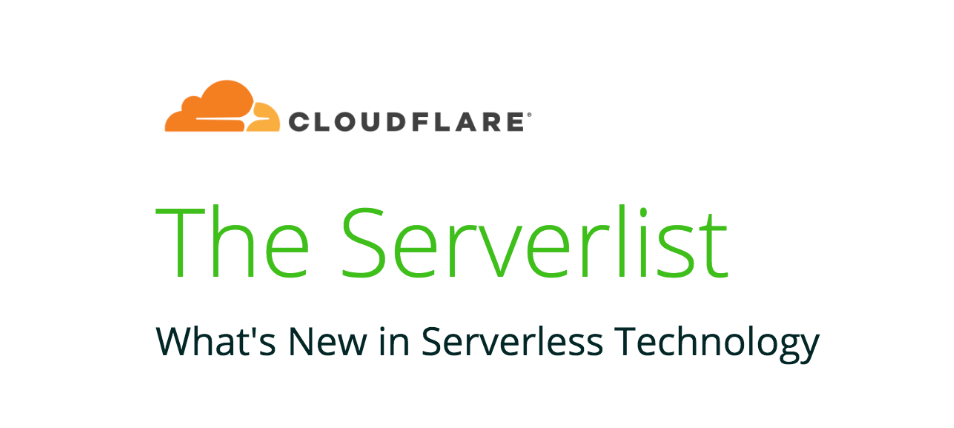Single Sign-On for Kubernetes: Dashboard Experience
Over my last two posts (part 1 and part 2), I have investigated user authentication in Kubernetes and how to create a single sign-on experience within the Kubernetes ecosystem. So far I have explained how Open ID Connect (OIDC) works, how to get started with OIDC and how to perform a login from the command line.
The final piece of this puzzle is the Kubernetes dashboard, often used by our engineers alongside kubectl. To complete our move to SSO, we wanted to ensure that, when using the Dashboard, our engineers logged in to the same account they used for kubectl.
Since Kubernetes version 1.7.0, the dashboard has had a login page. It allows users to upload a kubeconfig file or enter a bearer token. If you have already logged into the command line, this allows you to copy the OIDC id-token from your kubeconfig file into the bearer token field and login. There are, however, a couple of problems with this:
- The login page has a skip button — If you aren’t using any authorization (RBAC) then this would permit anyone to access the dashboard with effective admin rights.
- Copy and pasting a token from a Continue reading
Day Two Cloud 019: Building Your First CI/CD Pipeline
CI/CD. You’ve got a vague notion of what it might be. Then you're asked to help the dev team put together an automated delivery process for a cloud app. How you do get from CI/CD as a concept to making it a reality? That's the subject of today's Day Two Cloud podcast with guest Nathaniel Avery.Day Two Cloud 019: Building Your First CI/CD Pipeline
CI/CD. You’ve got a vague notion of what it might be. Then you're asked to help the dev team put together an automated delivery process for a cloud app. How you do get from CI/CD as a concept to making it a reality? That's the subject of today's Day Two Cloud podcast with guest Nathaniel Avery.
The post Day Two Cloud 019: Building Your First CI/CD Pipeline appeared first on Packet Pushers.
Can McAfee Sell Its Security Story In a World Without Firewalls?
The vendor kicked off its annual Mpower Cybersecurity Summit with a new analytics tool that aims to...
Kubernetes Latest Flaw a ‘Billion Laughs’ … Not
The vulnerability can allow someone to launch a denial-of-service attack against a Kubernetes API...
Rubrik CEO: ‘We’re Not for Sale’
"I want to make it unequivocally clear that Rubrik is not for sale," wrote Rubrik CEO Bipul Sinha...
SDxCentral’s Top 10 Articles — September 2019
VMware CEO: IBM Paid Too Much for Red Hat; AT&T, Sprint, & Cisco Execs Dump Cold Water on...
U.S. Cellular Sparks 5G Plans
The nation’s fifth-largest mobile operator says parts of Iowa and Wisconsin will gain access to...
Serverlist Sept. Wrap-up: Static sites, serverless costs, and more

Check out our eighth edition of The Serverlist below. Get the latest scoop on the serverless space, get your hands dirty with new developer tutorials, engage in conversations with other serverless developers, and find upcoming meetups and conferences to attend.
Sign up below to have The Serverlist sent directly to your mailbox.
Celebrating National Cybersecurity Awareness Month

Every October, we mark National Cybersecurity Awareness Month. From the U.S. Department of Homeland Security website, “Held every October, National Cybersecurity Awareness Month (NCSAM) is a collaborative effort between government and industry to raise awareness about the importance of cybersecurity and to ensure that all Americans have the resources they need to be safer and more secure online.”
We believe in an Internet that is open, globally connected, secure, and trustworthy. Our work includes improving the security posture of producers of Internet of Things (IoT) devices, ensuring encryption is available for everyone and is deployed as the default, working on time security, routing security through the MANRS initiative, and fostering collaborative security.
The Online Trust Alliance’s IoT Trust Framework identifies the core requirements manufacturers, service providers, distributors/purchasers, and policymakers need to understand, assess, and embrace for effective security and privacy as part of the Internet of Things. Also check out our Get IoT Smart pages for get more consumer-friendly advice on IoT devices.
Much of OTA’s work culminates in the Online Trust Audit & Honor Roll, which recognizes excellence in online consumer protection, data security, and responsible privacy practices. Since that report’s release in April Continue reading
Juniper vLabs
A little over a year ago Juniper released Juniper vLabs. What vLabs is, is a place where you can safely …
The post Juniper vLabs appeared first on Fryguy's Blog.
Undercover Apps You’ve Never Heard Of (Until Now)
With so many new apps springing up constantly, some very useful apps tend not to get the attention they deserve and become undercover apps that are used by a very few who happen to discover them and their usefulness. Here are some undercover apps you’ve probably never heard of until now, but may be worth learning a little more about.
4 Weirdly Helpful Undercover Apps
Vayable
Vayable is an app that allows you to enhance your travel or vacation experiences. This app is great for anyone visiting an unfamiliar area who wants to experience the area in a way only locals can. This app allows you to contact a local resident that will allow you to see sights or share experiences that are not listed in vacation brochures, such as having someone take you around to see the best street are in San Francisco and maybe even get to watch some local street artists at work.
Rover
Another great little known app for people who travel is Rover. If you have a dog and need to leave him behind when you travel for business or even vacation and don’t like the idea of placing your beloved pet into a cold Continue reading
New Content: Azure Networking and Automation Source-of-Truth
Last week I covered network security groups, application security groups and user-defined routes in the second live session of Azure Networking webinar.
We also had a great guest speaker on the Network Automation course: Damien Garros explained how he used central source-of-truth based on NetBox and Git to set up a network automation stack from the grounds up.
Recordings are already online; you’ll need Standard ipSpace.net Subscription to access the Azure Networking webinar, and Expert ipSpace.net Subscription to access Damien’s presentation. Azure Networking webinar is also part of our new Networking in Public Clouds online course.
Learn more about Workers Sites at Austin & San Francisco Meetups


Last Friday, at the end of Cloudflare’s 9th birthday week, we announced Workers Sites.
Now, using the Wrangler CLI, you can deploy entire websites directly to the Cloudflare Network using Cloudflare Workers and Workers KV. If you can statically generate the assets for your site, think create-react-app, Jekyll, or even the WP2Static plugin, you can deploy it to our global network, which spans 194 cities in more than 90 countries.
If you’d like to learn more about how it was built, you can read more about this in the technical blog post. Additionally, I wanted to give you an opportunity to meet with some of the developers who contributed to this product and hear directly from them about their process, potential use cases, and what it took to build.
Check out these events. If you’re based in Austin or San Francisco (more cities coming soon!), join us on-site. If you’re based somewhere else, you can watch the recording of the events afterwards.
Growing Dev Platforms at Scale & Deploying Static Websites
Talk 1: Inspiring with Content: How to Grow Developer Platforms at Scale
Serverless platforms like Cloudflare Workers provide benefits like scalability, high performance, and lower costs. However, Continue reading
“What’s your IPv6 strategy?”

For many in enterprise networking, IPv6 is just a distant memory of a tedious mandatory training a few years back. Weird addresses, over-eager trainer, stories about v6 adoption that never came true. Why then for the last couple of years have I been presenting to Aruba audiences about IPv6 adoption? While many network engineers maybe unaware, IPv6 is very much upon us and numerous times this year I've heard from various sources, 'What's your IPv6 strategy?'
It's alive!
Turning back the clock a few years and IPv6 was for the specialist or for university campuses eager to deploy the latest technology. Live deployments of IPv6 outside of academia were largely unheard of. Then came the ISP deployments across the global, in roughly 2015-2017. Now IPv6 was out in the wild and in our homes. It was this transition of IPv6 from the textbook to the live networks around us that changed the nature of the protocol and breathed life into those 128 bits.
But this was a largely silent change. No big fanfare, hashtags or broadsheet ads. No proliferation of start-ups hunting VC money. No LinkedIn profiles being updated with 'IPv6 thought-leader'. For that reason I feel many network Continue reading
Flow metrics with Prometheus and Grafana
The Grafana dashboard above shows real-time network traffic flow metrics. This article describes how to define and collect flow metrics using the Prometheus time series database and build Grafana dashboards using those metrics.Prometheus exporter describes an application that runs on the sFlow-RT analytics platform that converts real-time streaming telemetry from industry standard sFlow agents. Host, Docker, Swarm and Kubernetes monitoring describes how to deploy agents on popular container orchestration platforms.
The latest version of the Prometheus exporter application adds flow export.
global:The above prometheus.yml file extends the previous example to add two additional scrape jobs, sflow-rt-src-dst-bps and sflow-rt-countries-bps, that return flow metrics. Defining flows describes the attributes and settings available to build Continue reading
scrape_interval: 15s
evaluation_interval: 15s
rule_files:
# - "first.rules"
# - "second.rules"
scrape_configs:
- job_name: 'sflow-rt-metrics'
metrics_path: /prometheus/metrics/ALL/ALL/txt
static_configs:
- targets: ['10.0.0.70:8008']
- job_name: 'sflow-rt-src-dst-bps'
metrics_path: /app/prometheus/scripts/export.js/flows/ALL/txt
static_configs:
- targets: ['10.0.0.70:8008']
params:
metric: ['ip_src_dst_bps']
key: ['ipsource','ipdestination']
label: ['src','dst']
value: ['bytes']
scale: ['8']
minValue: ['1000']
maxFlows: ['100']
- job_name: 'sflow-rt-countries-bps'
metrics_path: /app/prometheus/scripts/export.js/flows/ALL/txt
static_configs:
- targets: ['10.0.0.70:8008']
params:
metric: ['ip_countries_bps']
key: ['null:[country:ipsource]:unknown','null:[country:ipdestination]:unknown']
label: ['src','dst']
value: ['bytes']
scale: ['8']
aggMode: ['sum']
minValue: ['1000']
maxFlows: ['100']

